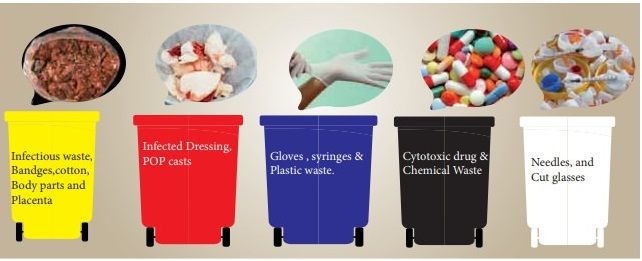Health care facilities such as hospitals, clinics, maternity homes and pathology labs are very critical for society. These facilities are responsible treatment and keeping wellbeing but on the other side there is lot of waste that gets generated by them, these waste as very critical to handle is they can have even worst effect than what service these health facilities provide. Due to increasing demand of medical related kits and products there is demand of managing the waste created out of it, the best approach that followed for any waste management Reduce, Recycle, Reuse and dispose responsibly, always not applicable in sense of medical, we cannot reduce the consumption but other measures can be used.

Medical and bio wastes need careful treatment and disposal as they might result in some type of disease or can result in very adverse effect of all kind of living creatures. Treating all type of medical wastes in best possible way in only option that remains, hence segregation of becomes key for success of waste treatment. Below are some of the key thermal treatments:
• Incineration:
Incineration is typically used for pathological and pharmaceutical waste. Incineration is a high-temperature dry oxidation process that reduces organic and combustible waste to inorganic, incombustible matter and results in a very significant reduction of waste volume and weight. Incineration of medical waste should be performed in a controlled facility to ensure complete combustion and minimize any negative effects for the environment. This process is usually selected to treat wastes that cannot be recycled,reused, or disposed of in a landfill site.
There are three type of incineration methods:
- Double-chamber pyrolytic incinerators
- Single-chamber furnaces with static grate
- Rotary kilns
• Autoclaving:
Majority of medical wastes are suitable of the process of autoclaving before any further processing on them. In simple word, autoclaving is simply a process of steam sterilization, this thermal treatment is typically used for the sharp and certain other types of infectious process. In this process, wastes to be sterilized are placed inside the large pressure cooker like chamber and steam is fed in to it for specific period of and at pressure, this results in killing of microorganisms. This process is typically used before disposal.
Autoclaving, which is also known simply as steam sterilization, is the most commonly utilized alternative to incineration. It is both less costly and carries no documented health impacts. In this method, wastes are sterilized or disinfected prior to disposal in a landfill. Bags of waste are placed in a chamber and steam is introduced for a determined period of time at a specified pressure and temperature. This assures the destruction of microorganisms.
Modern aged autoclaves are now automated to minimize the human intervention and risk. However, many medical wastes such as chemical waste, including chemotherapy (radioactive) waste, as well as pharmaceutical waste can’t be disinfected in an autoclave.
• Microwave based sterilization
Microwave with frequency of 2450Mhz results in destruction of almost all microorganisms. The water contains within the waste to be treated helps rapid heating of and destruction of infectious components. Microwave penetrates within the waste and results in disinfestation from within as well. Since microwave as more suitable for the treatment of semi-solid or the one which contains some amount of water within, hence to get best results sometimes wastes are first mixed with water or grinded and then mixed with water. Microwave based systems could be a potential substitute of autoclaving.
• Thermal inactivation
Many medical wastes those cannot be treated with the microwave or other mentioned thermal techniques above are treated by using conventional heating systems such as drum heating and etc. In this process waste is heated to temperatures where infectious agents are destroyed. Potentially used for treating liquid wastes.
